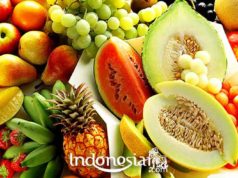Knowing ketupat is certainly a familiar thing for those of you who have visited countries in Southeast Asia such as Indonesia, Malaysia, the Philippines and Timor Leste. Ketupat is a typical rice-based food wrapped in a wrapper made of woven young coconut leaves (janur), or sometimes from other palm leaves. Ketupat is mostly found during Eid celebrations until the next 5 days when Muslims celebrate the end of the fasting month.
Typical foods that use ketupat include kupat tofu (Sundanese), valveat kandangan (Banjar), grabag (Magelang), kupat glabet (Tegal City), coto makassar (from Makassar, ketupat is called katupa), lotek, tipat cantok (Bali) , as well as gado-gado which can be served with rice cake or rice cake. Ketupat can also be served to accompany satai, although lontong is more common.
There are two main forms of a diamond namely a seven-pointed head (more common) and a six-pointed parallelogram. Each shape has a different woven groove. To make a diamond, it is necessary to choose a quality leaf that is long and wide, not too young and not too old.
Among some circles on the island of Java, ketupat are often hung above house entrances as a kind of amulet. There are people who hold the tradition of not making ketupat on weekdays, so that ketupat is only served during Eid and up to five days (Javanese, sepasar) afterward. In fact, there are some areas in Java that only serve ketupat on the seventh day after Eid or so-called Ketupat Day.
On the island of Bali, ketupat (called tipat there) is often offered as a ceremonial offering. In addition to offerings, in Bali ketupat is sold around for additional food equivalent to meatballs, especially these food vendors are often found on Kuta Beach by being pushed around there.
The tradition of ketupat (kupat) Lebaran according to the story is a symbolization of the Javanese expressions of the Javanese language ku = confess (admit) and pat = lepat (error) used by Sunan Kalijaga in broadcasting Islamic teachings on the island of Java, which at that time there were still many who believed in the sacredness of the kupat. This cultural assimilation and belief is finally able to shift the sacredness of the ketupat to an Islamic tradition when it becomes a food that is always there when Muslims celebrate Eid as the right moment to apologize to each other and admit mistakes. Come on, get other interesting information from indonesiar.com.

































